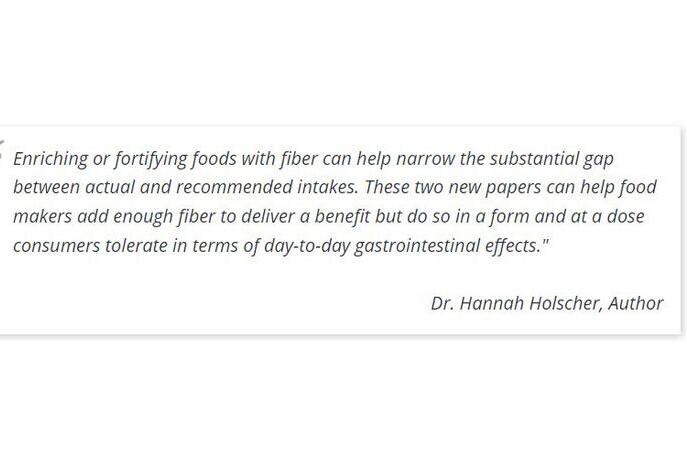Addressing consumer-perceived gastrointestinal effects associated with fiber-rich diets

When enhancing foods to capture the health-promoting benefits of non-digestible carbohydrates like fiber, it is important to address consumer-perceived gastrointestinal effects typically associated with fiber-rich diets.
Tolerable intake levels of non-digestible carbohydrates (NDCs), like fiber, are needed to manage consumer-reported gastrointestinal effects such as gas and bloating.
Two new papers in the journal Advances in Nutrition describe opportunities for adding fiber to foods that are both beneficial to health and acceptable by consumers in terms of gastrointestinal effects. In the first paper, fiber researcher Annemarie Mysonhimer working with Dr. Hannah Holscher of the University of Illinois-Urbana Champaign conclude that among fibers added to foods, tolerance varies widely ranging from as low as 4 grams to as high as 25 grams daily. They recommend that future fiber research test wide ranges of intakes, noting that gastrointestinal tolerance be measured using individual's self-reports, such as excess gas or feeling bloated.
Many factors affect the relationship between a fiber and gastrointestinal effects, including doses tested, the form of foods, and which segments of the population are studied. As a result of the differing study designs in this area of research, food manufacturers face constraints when trying to compare fiber ingredient options to select one that provides a health benefit within acceptable consumer intestinal tolerance.
To address this challenge, the IAFNS Carbohydrate Committee organized a scientific session at the 12th Vahouny Fiber Symposium. Subsequently, the seven fiber experts published a perspective paper recommending study designs and methods to measure human tolerance to nondigestible carbohydrates. The extensive details in this paper comprise an essential tool for planning future human fiber feeding studies. In fact, the scientists included examples of daily and weekly subjective questionnaires they recommend using in the online supplemental materials so that others can easily access them for future studies. When adopted by researchers and funding organizations, the methods outlined in the paper will aid formulation of fiber-rich foods by enabling relevant comparisons of different fiber types.
Source:
Institute for the Advancement of Food and Nutrition Sciences
Journal reference:
Mysonhimer, A.R., et al. (2022) Gastrointestinal Effects and Tolerance of Nondigestible Carbohydrate Consumption. Advances in Nutrition. doi.org/10.1093/advances/nmac094.